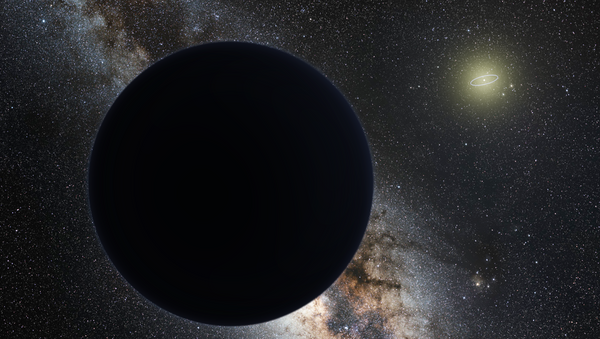Since that time, astronomers from all over the world published numerous studies that either back up or doubt this theory.
In an interview with Sputnik, astronomer Carlos de la Fuente Marcos, a research fellow at the Complutense University of Madrid (UCM), commented on his team's latest findings on the issue.
"As far as we can tell, no actual direct observations of any planets beyond Pluto have been recorded yet. What we have is reasonably strong evidence that they exist; it is like tracking an animal, you see the footprints but the animal is not quite on sight yet," Marcos told Sputnik.
Some scientists believe that the orbits of certain Trans-Neptunian Objects (TNOs) serve as proof of the existence of Planet 9, while other astronomers point out that these studies are characterized by an observational bias.
In their publication, which was recently released in the Monthly Notices of the Royal Astronomical Society, Marcos and his colleagues use a new technique focusing on so-called extreme TNOs (ETNOs).
"We focus on the orbital nodes of extreme trans-Neptunian objects or ETNOs. Any object orbiting the sun crosses the plane of the solar system or ecliptic at two points called the nodes of the orbit. At these locations, the probability of interacting with other bodies (seen or unseen) is highest. If there is nothing to interact with, we expect a uniform distribution of the distances to the nodes of the orbits. However, if there is a perturber, the distribution of nodal distances may show clusters and gaps," Marcos said.
The Extreme Trans-Neptunian Objects orbit our sun at distances greater than 150 AU, and never cross Neptune's orbit. For instance, the hypothetical Planet 9 is assumed to orbit our sun at an average distance of 400 AU.
"When we study the distribution of the orbital nodes of these comets we observe that they tend to be accumulated towards a value of the distance from the sun of 5.2 astronomical units, which is the average value of the separation between Jupiter and the sun. In other words, these comets tend to have a node in the path of Jupiter and this explains why they are perturbed by the giant planet as they experience close encounters with it," Marcos said.
"We have studied the distribution of the nodes of the ETNOs and the extreme Centaurs which also move along very stretched paths and found a similar organization of the nodes that we interpret as a signal of the presence of a planet orbiting the sun at an average distance of 300 to 400 astronomical units," he added.
At the moment, astronomers know only about 2s8 ETNOs, but the authors of the publication are confident that they will discover more of them. In this case, they will be able to analyze their nodes and confirm their observations, moving one step closer to the discovery of Planet 9.



